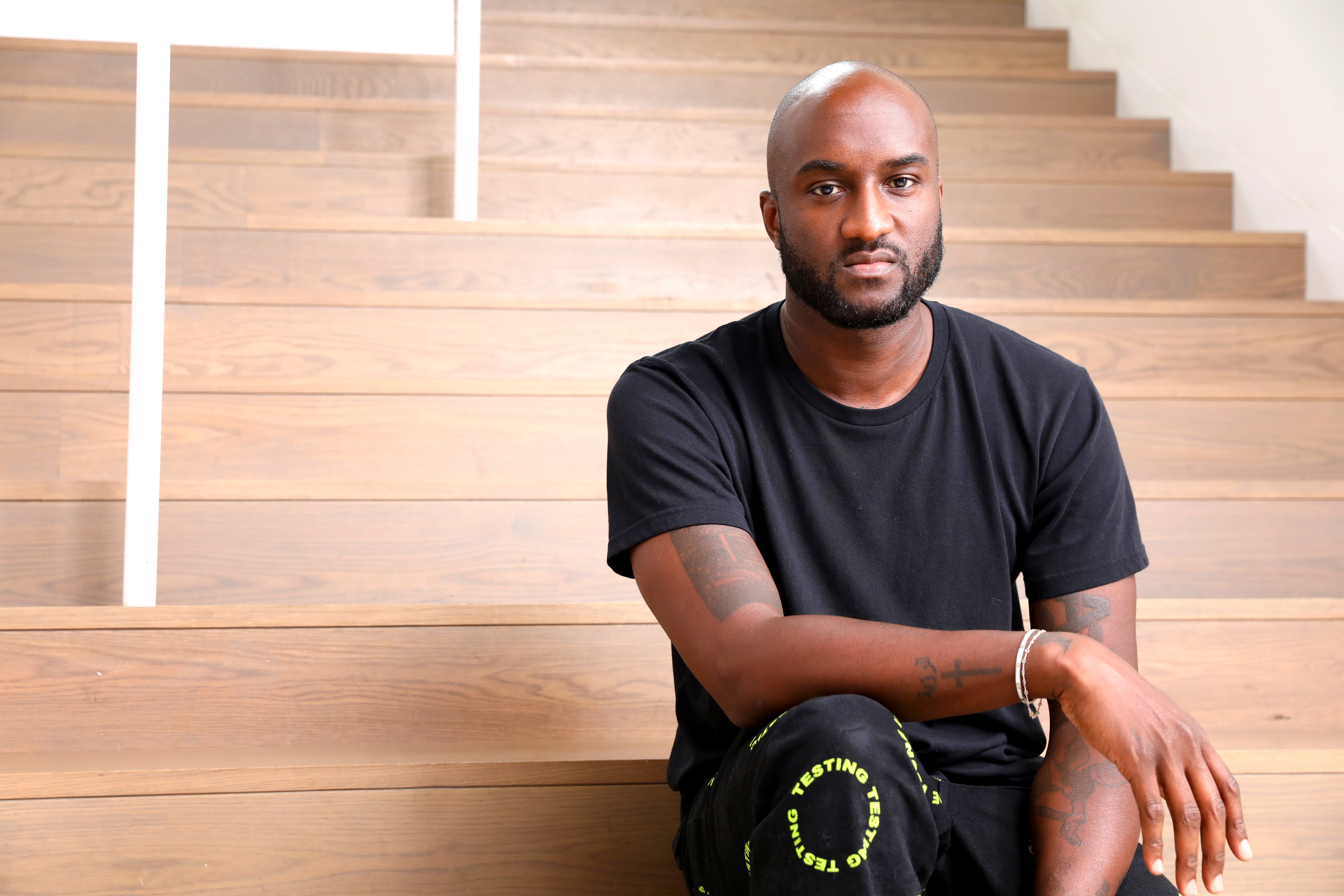
Last week, designer Virgil Abloh’s exhibition at the Museum of Contemporary Art Chicago, a multidisciplinary presentation of his work, from fashion and interior design to art, was extended through the month of September—an unsurprising move, considering that “Figures of Speech” is the museum’s third most highly visited show ever, behind retrospectives of David Bowie and Takashi Murakami.
But not only that: yesterday, Abloh also released three capsule-collection bags inspired by art that has shaped his creative ethos, to be sold exclusively through the museum. The bags, in his words, offer a unique opportunity to “literally wear the exhibition.”
Installation view, Virgil Abloh: “Figures of Speech”, MCA Chicago. Photo: Nathan Keay, © MCA Chicago.
The designer has also filled the museum’s gift shop with other special items for the duration of the exhibition. The space, decked out in cool grey and silver tones and flanked by photographs by Juergen Teller, offers limited-edition pieces by Abloh’s fashion brand, Off White, as well as his design collaborations with artists such as Tom Sachs, Cali Thornhill DeWitt, Brendan Fowler, and Simon Brown.
But the exclusive carryalls are the main showpieces, with two of the three prominently featuring images from Caravaggio’s The Entombment of Christ. “Caravaggio has been a longstanding touchstone for Virgil,” says Michael Darling, the MCA’s chief curator. “He was an artist Virgil discovered as an undergraduate and connected to his story, especially to his innovations with chiaroscuro and how that could change the direction of painting.”
Virgil Abloh × MCA pop-up store, “Church & State,” MCA Chicago. Photo: Peter McCullough, © MCA Chicago.
Though this isn’t the first time the MCA has ventured into selling “merch” in specially curated settings for its more popular artists—such as Bowie, but not Murakami, which the museum cites as a real missed opportunity—they’ve doubled down for Abloh, realizing his show’s take-home value.
“We knew Virgil’s audience would be expecting products that would mark their visit,” Darling says. “It was an easy conversation with Virgil and a commonsensical decision for the museum to pursue it as well. Then he stepped in to really design the look and feel of the space, not to mention the exact merchandise, which is very typical for him and his attention to detail and presentation.”
Caravaggio Bag, Off-White™. Photo courtesy MCA Chicago.
In many ways, the show’s success speaks to the closening worlds of art, design, and fashion, each of which Abloh seems to navigate especially deftly. A self-proclaimed jack-of-all-trades, he began his career as an architect in Chicago, where he also studied art before going on to design and revolutionize streetwear for Kanye West and Nike. Aside from running Off White, Abloh was also recently named the creative director of men’s fashion for Louis Vuitton, making him the first African American designer to assume a head role for the Paris-based house.
Abloh, it seems, is a generation-defining visionary who has somehow managed to earn respect in three once-distinct fields. “The art [on the bags] is a form of signage, and the clothes are fragments of that signage, a way to further blur the distinctions between the exhibition and the merchandise,” Darling says. “It forms, together, a visual identity.”
Caravaggio XL Bag, Off-White™. Photo courtesy MCA Chicago.
Darling says he’s curious to see how the relationships between art, design, and fashion evolve over time, as each becomes markedly less purist.
“I see artists more interested in the space of fashion to extend the audiences for their ideas, while fashion designers are inspired by the freedom and individualism that fine artists have been able to carve out for themselves,” he says. “The art world seems more willing to envision artists moving into fashion without losing integrity.”